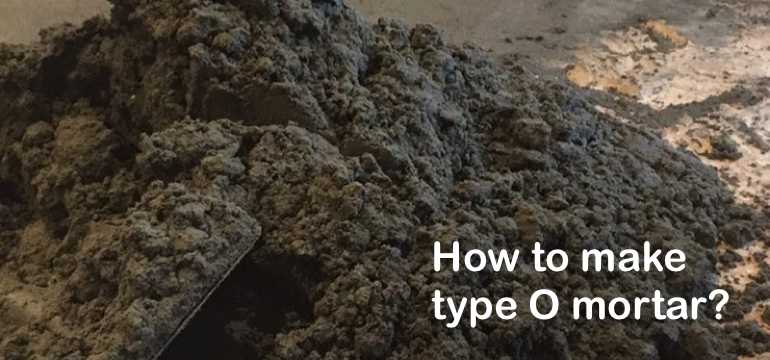When you’re building a brick wall, you need mortar in between the bricks to solidify the structure and hold it all together. Mortar acts as a thick paste at first, but it slowly dries and sets into a hard, durable substance, ensuring the longevity and durability of your wall.
Mortar comes in a wide variety of types, with the most common being M, N, S, and O. If you’re curious about type O mortar and whether it might work for your project, it’s a good idea to do some research first. This guide offers an overview of type O mortar: what it is and how you should use it.
Type O mortar and other mortar grades
Mortar is given a grade based on its composition and the uses for which it has been designed. For example, type N mortar works well for construction above ground. It can be used for interior or exterior purposes, and it is a load-bearing mortar type, which means it can handle significant amounts of weight, up to 750 pounds per square inch (psi).
It can also be used in soft stone masonry. Type N mortar can endure high temperatures and rough weather, thanks to its composition of one part cement, one part lime, and six parts sand.
Type S mortar is designed for “below grade” or underground projects. This tough, durable mortar is just right for masonry foundations, manholes, or sewers. It also works well when used to construct brick patios, pavements, and retaining walls. It can handle a significant amount of wear, tear, and hard use. Type S mortar has top compressive strength, often well beyond 1800 pounds per square inch, depending on how it is mixed.
Type M mortar excels at bearing heavy loads, with a minimum compressive strength of 2500 pounds per square inch. Like Type S mortar, it is also intended for below-grade use and foundational structures. You can also use it for driveways and retaining walls. However, keep in mind that type M mortar doesn’t adhere or seal areas, as well as some other types, do. Combine it with natural stone for the best effect.
Type O mortar is the least durable of these types, with a minimum compressive strength of just 350 pounds per square inch. It’s only intended for interior, above-grade purposes. It is not load-bearing, so don’t plan to use it for supporting heavy structures. Thanks to its lower compressive strength and low structural capacity, it is mostly used for repairs on structures that have already been built using some other type of mortar. Since it is easy to apply and has a malleable, versatile consistency, users prefer it for repointing and patch jobs.
How to make type O mortar?

When you buy type O mortar, you’ll purchase it in large bags of mix. The usual combination for type O compressive strength is one part cement, two parts lime, and nine parts sand.
This yields the requisite 350 pounds per square inch. The bag of the mix that you purchase should have the necessary type O mortar recipe printed on it, so be sure to consult those steps before you start mixing the mortar you need for your project.
When to choose type O mortar?
Harsh environments that freeze and thaw rapidly during certain seasons or that suffer from extremely high temperatures aren’t necessarily a hospitable environment for a structure with type O mortar.
After a certain number of freeze/thaw cycles or too much high heat, the mortar will crack or deteriorate. Instead of using primarily type O mortar while laying brick, use a stronger mortar and simply touch up or repoint with type O mortar as needed.
If you’re repointing or repairing a weather-beaten wall, a historic house, or an old chimney, where most of the old brick and mortar are still intact, use type O mortar to fill in gaps and cracks and restore the look of the structure to its former glory.
Where to buy type O mortar?
You can purchase type O mortar at local hardware or home repair store. You can also order it online from a number of different retailers and home renovation supply outlets. Compare some brands and prices to determine which product would offer the best value for your project.
If you’re ordering online, it’s better to order too much than too little, since you won’t necessarily be able to run to a local store to acquire the same brand if you happen to run out mid-project.
If you’re not sure how much mortar you’ll need, consult with a sales associate at a local store or a friend who has done brick and mortar jobs before. Once you describe your project, those individuals should be able to give you a general idea of how much type O mortar mix you’ll need to purchase.
- How to Cut Lexan - September 25, 2020
- Mineral Spirits vs. Mineral Oil - September 25, 2020
- Shellac vs. Polyurethane - September 24, 2020
